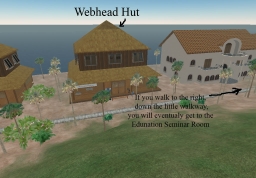Any suggestions for resources or activities would be greatly appreciated--especially ideas for how to scaffold from simpler kinds of paraphrasing to writing about a text.
My plan at this point is to start with asking them to explain the meaning of a basic proverb like, Don't count your chickens before they hatch.
Thanks to all,
Sheri Stein
- - - - - - - -
I think note-taking is good way to start paraphrasing, and it also encourages students to read more actively.
I would demonstrate how to take notes on a short essay, putting the notes in outline on the board or with an OHP. Then have students make notes for a different short essay and compare their notes with each other.
Infoplease has some good ideas for students, and the second half of this page is about taking notes from texts:
<http://www.infoplease.com/homework/studyskills2.html>
Lifehack's advice on taking notes is a little complex for lower level students, but you could easily extrapolate his list of what is important to make notes of:
<http://www.lifehack.org/articles/productivity/advice-for-students-taking-notes-that-work.html>
Those are just a few sites I pulled from a quick Google search of "taking notes."
Cheers--
--Elizabeth Hanson-Smith
CSUS, emeritus
http://ehansonsmith.blogspot.com
- - - - - - - - - -
Another activity I do with lower level students is use our ESL newspapers and have them all read the same article, usually about a high-beginner/low-intermediate level article. Then we work together to summarize/paraphrase the article in one paragraph on the board/OHP using fewer than 5 sentences. This is really challenging for them. I then break them into groups, and they do the same. Next they are assigned various articles and perform the same activity indivitually. It's good to have plenty of these newspapers on hand!
I follow up this activity a couple days later by having them all read an article, then put the article down, and then paraphrase the article without looking at it. This is really a stretch but a great exercise.
Best,
Monique Abbett
Ashland, ELS Language Centers
Southern Oregon University
- - - - - - - - - -
One thing I do to scaffold paraphrasing is an activity I call
"backwards paraphrasing," in which I give the "complex" version and
the students have to write the "simple" version. I base it on the
vocabulary we've been studying. For example, if we've had the words
gravity, require, deliberate, I might give the students a sentence
like:
The serious nature of the situation makes it necessary toThe students must replace the underlined phrases
think carefully.
with the correct form of the vocabulary word (if students are still
beginning, I may supply a list of the words in the correct form).
This accomplishes several things: 1) it scaffolds use of new
vocabulary, 2) it demonstrates a form of paraphrasing, and 3) it
leads to a good discussion about why we have to learn all that
vocabulary in the first place (conciseness and precision).
Sheryl Slocum
Alverno College
- - - - - - - - - -
Teaching paraphrasing is difficult, and while I see the value of this
suggested activity, it's an approach I avoid with students because some
may see this as plagiarizing the original author's sentence structure
by "plugging in" synonyms.
Instead, I ask students to look at a sentence, identify phrases and
parts of speech, and rearrange the information in "new" sentence
structure.
Thus, taking the original:
The serious nature of the situation makes it necessary to think carefully.
and taking it apart as phrases and parts of speech and how they
function:
the serious nature (noun phrase)
of the situation (prep. phrase), etc.
makes
it
necessary
to think
carefully
and turning it into a different structure:
Thoughtful consideration is necessary because the situation is grave.
This has the potential to teach vocabulary, accurate paraphrasing, and
sentence structure.
Heidi Anderson
- - - - - - - - - - - - -
As far as I know and have tried, I asked students to work in pairs on one article or one paragraph. I asked them to identify the idea in the article and discussed between one another. Then students were asked to write one paragraph for themselves by restating on what they have read in their own words. Next, the pairs exchanged the draft to one another. Each student commented on his/her friend's paragraph whether his/her friend had covered the idea stated in the article.
Pisarn Chamcharatsri
- - - - - - - - - - - - - - - -
The "pictograph" poster (or page) has been an effective paraphrasing strategy for beginners in my classes (High School/California). I usually start out by brainstorming the word "plagairize." We might discuss the meaning (from the Latin 'to kidnap'), why people plagairize, how it is interpreted in different cultures, the consequences in our society, school policy, etc. Once we've established the importance of paraphrasing (and citing) and quoting, I guide them to analyze the different formats with several hands-on activities that match quotes, paraphrases and summaries with examples from familiar texts. Next, we read and annotate a new text together. (I model the process the first time with a classroom example. Then, I give each group their own article to annotate.) For the pictograph, I supply groups of 3-4 students with posters (and an article or text of some sort per group), chart paper or regular paper. Then, I instruct them to include the following on their posters: the title of the text, the author, 3 bullets of significant facts or details and a drawing that represents a powerful idea or theme from the text. (If you have access to more technology, you could easily use online pictures or clip art.) You could also have them include a key sentence or phrase quote. By encouraging students to reflect and create an icon, picture or "non-linguistic representation" (Marzano) of the reading, beginning students learn to paraphrase and avoid plagiarism.(Note: one way to make sure that everyone participated in the process is to ask that each student select a color marker and use only that color. They can sign their names in the same color.) When the students write their summaries or responses based on their own posters, they can paraphrase:)
Julie Goldman
- - - - - - - - - - -
This is a very interesting article on plagiarism by Dahlia Syahrani Md. Yusof I found when doing research for a writing class in the MA-TESL program at SPU in Seattle. It is from the Internet TESL Journal, Vol XV, No. 2, February 2009 http://iteslj.org/Articles/Yusof-Plagiarism.html
Dyani R. Bartlett
- - - - - - - - - - - -













































